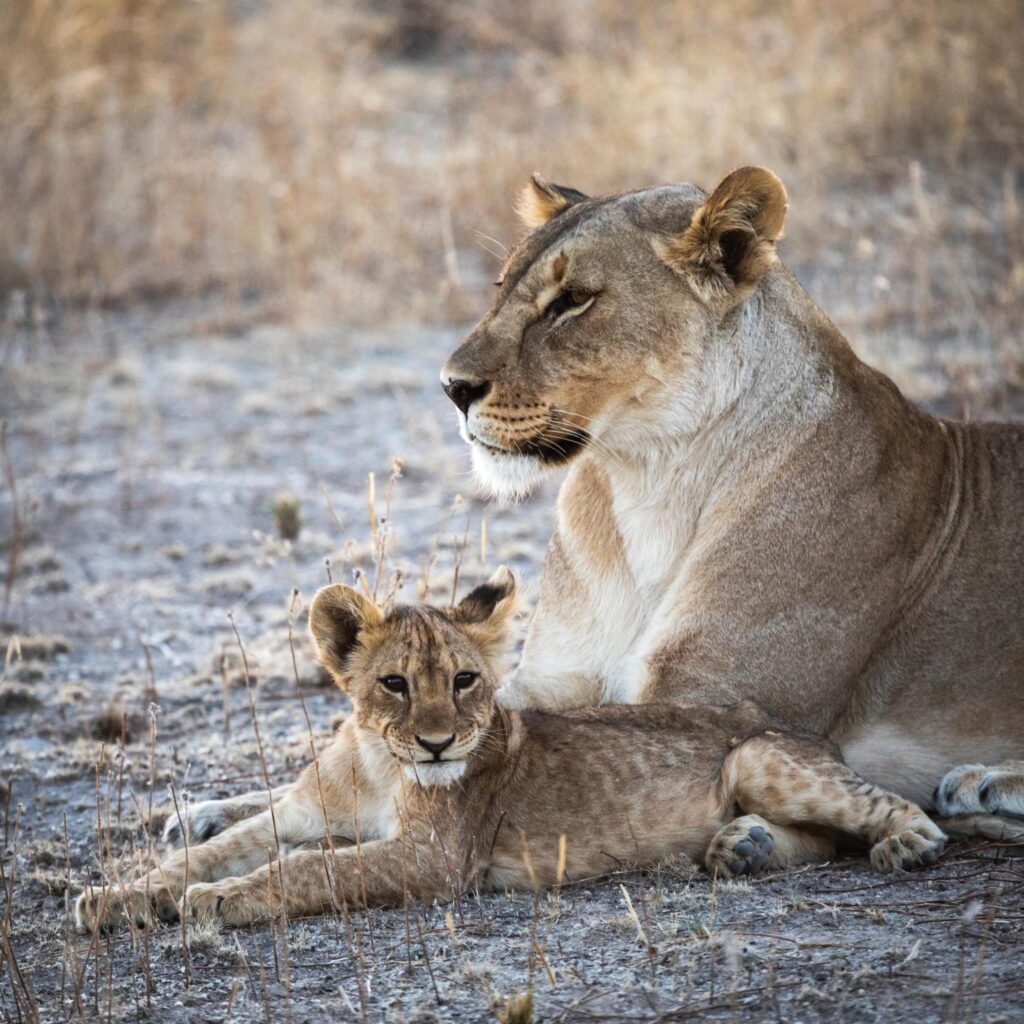

Of teeth and claws
Taking stock of carnivore research in the Greater Etosha Landscape
Text Stéphanie Périquet
From the Autumn 2022 issue
The Greater Etosha Landscape (GEL) is host to a wide diversity of carnivores, with an almost complete guild of large carnivores (only the African wild dog is missing). This landscape also exemplifies the situation faced by many protected areas in the world: a national park surrounded by a mosaic of different land-use types. Here it is communal land to the north and west and private free- hold farmland to the south and east. Carnivore populations are mostly declining throughout the world, especially large species, and given their importance to ecosystems, a better understanding of the drivers of their distribution and abundance is crucial to their conservation.
Etosha National Park has a long history of research with a dedicated research centre, the Etosha Ecological Institute (EEI), located at Okaukuejo since 1967. In partnership with the EEI, the Ongava Research Centre conducted a literature review and search for any form of output from research conducted on carnivores within a buffer of 50 km of Etosha. This included scanning online databases, but also spending several days in dusty archive rooms at the EEI.
We found that carnivore research started in the 1910s and has steadily increased until the 1980s, with most of the research conducted by government employees. Since the 1990s, after independence, the research output somewhat decreased and was mainly conducted by external researchers. The vast majority of research was conducted within the boundaries of Etosha and focused on ecological questions rather than being applied. Furthermore, most of the research targeted either large and charismatic (lions, spotted hyenas and cheetahs) or abundant and conspicuous (black-backed jackal) species. Finally, the distribution of research in terms of both topics and species of interest was uneven. For instance, we know quite a lot about lions and cheetahs, but almost nothing about servals and honey badgers. Additionally, while certain topics were studied in many species (e.g. distribution or population), far less is known about other topics (e.g. behaviour, reproduction and interaction).
Our synthesis highlights the important role played by political decisions in research direction and output, which has probably caused the decrease in government-led carnivore research in the 1990s. It further shows that we have very uneven knowledge across species and topics, and while some are well studied, we identified many gaps needing to be filled by further research.
Saddle up as we embark on our long-term and large-scale Etosha Carnivore Programme, also known as Carnivores in the GEL!
The results of this study are published in the Namibian Journal of Environment and freely available online at www.nje.org.na.
Ongava Research Centre (ORC) is an institution built by private investment in 2005 and has the independence and potential to answer major questions and understand processes fundamental to the functioning of the natural environment.
The three main purposes of ORC are:
- To explore, discover and understand important features of the natural world.
- To support the management of conservation areas, in particular the Ongava Game Reserve, the Rhino Belt and Etosha National Park.
- To support the development of young people with potential to be dedicated scientists and conservationists.
ORC has already built an impressive collection of data, which it continues to expand. For instance, over 7 million camera trap images of Ongava wildlife have been tagged with keywords to facilitate analyses. It continues to assemble a collection of bioindicator samples of natural materials and organisms to help understand processes and consequences of environmental change.
The ORC campus features offices and laboratories, plus accommodation for resident researchers, associates, interns and students. A state-of-the-art visitor centre showcases the excellent work in conservation and research done by ORC. TNN
For more information, visit www.orc.eco






